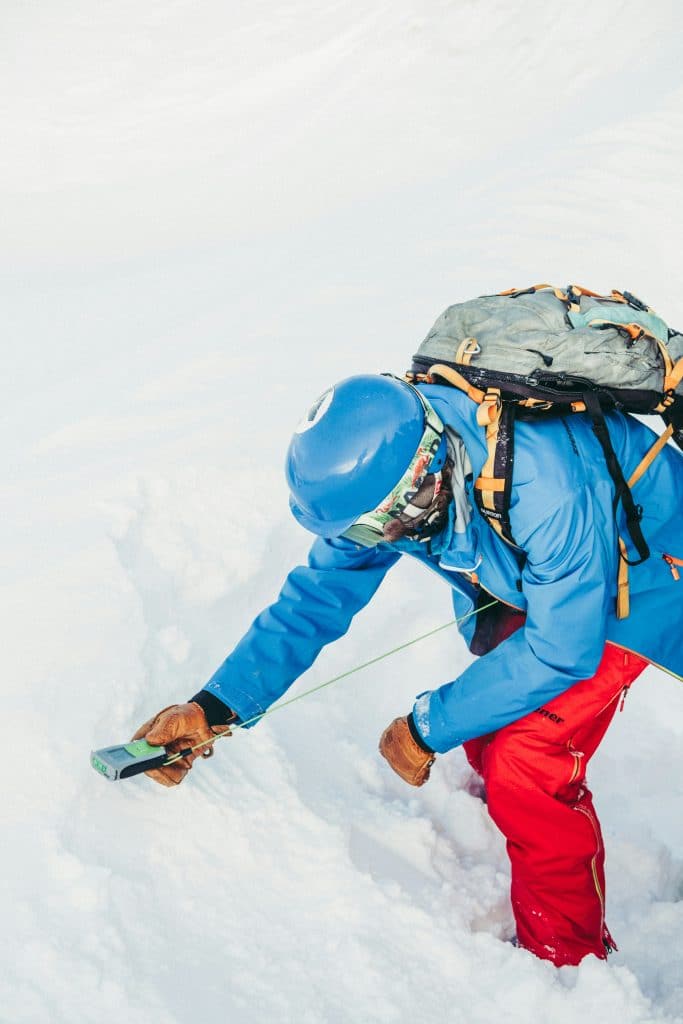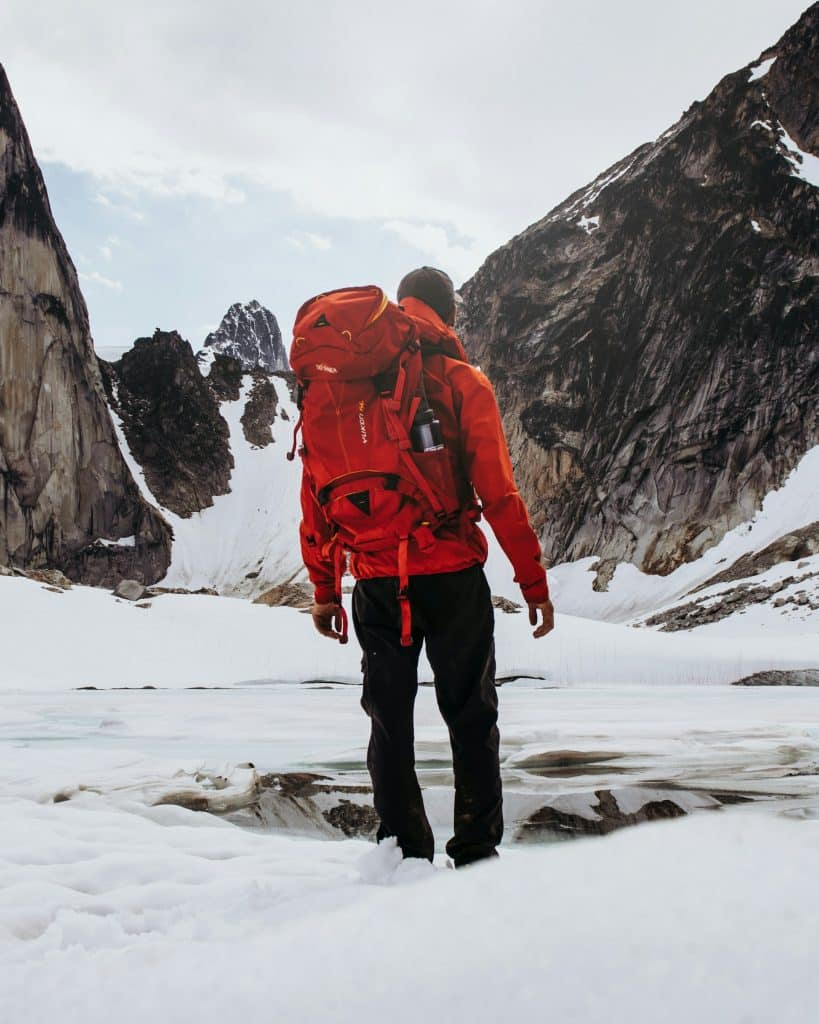Introduction
Embarking on a thru-hike can be an adventure of a lifetime, but it requires careful planning and impeccable organization, starting with how to pack your backpack. The key to a successful thru-hike is packing your backpack efficiently and effectively. From distributing weight evenly to optimizing space, packing your backpack for a thru-hike is a skill that can make or break your experience on the trail. This comprehensive guide will walk you through the essential steps and expert tips on how to pack your backpack for a thru-hike, ensuring you are fully prepared for the journey ahead.
Key Takeaways:
- Plan your gear carefully: Consider the type of terrain, weather, and duration of your hike when choosing equipment and supplies.
- Lightweight is key: Minimize the weight of your backpack by choosing lightweight, multifunctional gear and repackage items to reduce bulk.
- Pack strategically: Place heavier items closer to your back and at the top of the pack while keeping frequently used items easily accessible.
- Consider food options: Opt for dehydrated or lightweight packaged foods to save space and weight while meeting your nutritional needs.
- Test pack before hitting the trail: Ensure your pack is properly balanced and comfortable by doing a trial run with your fully loaded backpack.
- Be prepared for weather changes: Pack clothing and gear that can adapt to varying weather conditions, such as a waterproof jacket and extra insulation.
- Eliminate non-essentials: Prioritize the items you need for a successful hike, and leave behind unnecessary luxuries or redundant gear.

Essential Tips for Packing
If you are planning to embark on a thru hike, it is crucial to pack your backpack wisely. The right packing techniques can significantly affect your comfort and endurance on the trail. Here are some essential tips for packing your backpack for a thru hike:
- Invest in lightweight and compact gear
- Organize your gear efficiently to optimize space
- Consider the weather conditions and terrain of the trail
- Distribute weight evenly to prevent strain on your body
- Be mindful of packing essential items for safety and survival
After all, the key to an enjoyable thru hike is being prepared and packing smart.
Balancing Weight Distribution
An important aspect of packing your backpack for a thru hike is ensuring the weight is evenly distributed. This will help prevent strain on your back and shoulders, allowing you to maintain a comfortable pace on the trail. Start by placing heavy items closer to your back and at the center of the pack, then distribute lighter items around them to maintain balance. Adjust the straps to secure the load and keep it close to your body for stability.
Prioritizing Backpack Compartments
When optimizing backpack compartments, it is crucial to balance accessibility and weight distribution. The key is to prioritize placing essential items in easily accessible compartments while considering the weight distribution throughout the pack. Here’s a breakdown of how to prioritize backpack compartments for a thru hike:
| Balancing | Prioritizing |
| Even weight distribution | Accessibility and convenience |
| Stability and comfort | Strategic placement of essentials |
Essential items such as water, snacks, a first aid kit, and navigation tools should be easily accessible, while heavier items like cooking gear and spare clothing can be packed deeper in the backpack to ensure balance and stability. By prioritizing backpack compartments in this way, you can maintain a comfortable and efficient packing system for your thru hike.

Factors Affecting Your Pack
While preparing for a thru-hike, it’s essential to consider several factors that can affect the contents of your backpack. Factors such as the duration of your hike, weather and seasonal considerations, and the specific terrain you’ll be encountering will all impact what you decide to pack. Your personal preferences and physical abilities will also play a role in determining what goes into your pack.
- Duration of hike
- Weather and seasonal considerations
- Terrain
- Personal preferences and abilities
Though these factors may seem overwhelming, taking the time to carefully consider each one will ultimately lead to a more enjoyable and successful thru-hike experience.
Duration of Your Thru-Hike
For those embarking on a thru-hike, the time you’ll be on the trail will significantly influence what you pack. A longer hike may require additional supplies and provisions, while a shorter hike may allow for a more minimalist approach. Consider the number of resupply points along your route and the availability of food and other essentials. It’s important to balance carrying enough to meet your needs and not overburdening yourself with unnecessary items.
Weather and Seasonal Considerations
For thru-hikers, the weather and seasonal changes are crucial elements to account for when deciding what to pack. You’ll need to be prepared for various weather conditions, from extreme heat to cold and wet weather. Layering and versatile clothing choices will be essential to staying comfortable and safe on the trail. Additionally, the time of year you’ll be hiking will impact the availability of water sources, trail conditions, and potential hazards such as snow or extreme heat.
As you plan for your thru-hike, consider the potential weather patterns and seasonal variations you may encounter. Being prepared for these changes will help ensure a successful and enjoyable journey.

Packing Your Backpack
Unlike packing for a weekend camping trip, preparing for a thru hike requires careful consideration and efficient organization. Every ounce in your backpack matters, so it’s important to pack only the essentials and prioritize weight-saving strategies.
Layering Strategy for Clothes
Layering is essential to staying comfortable and dry on your thru hike. Start with a moisture-wicking base layer, followed by insulating layers, and finish with a waterproof and breathable outer layer. This strategy allows you to adjust to changing weather conditions and maintain a consistent body temperature throughout your journey.
Food and Water Essentials
Clothes are important. On a thru hike, you must carefully plan your food and water supply to ensure enough sustenance to fuel your body and stay hydrated. Pack lightweight, high-calorie foods that are easy to prepare, and plan for reliable water sources along the trail. It’s also a good idea to carry a portable water filtration system or purifying tablets to ensure access to clean water.
It is essential to carefully plan your food and water supply to ensure enough sustenance to fuel your body and stay properly hydrated. Pack lightweight, high-calorie foods that are easy to prepare, and plan for reliable water sources along the trail. It’s also a good idea to carry a portable water filtration system or purifying tablets to ensure access to clean water.
Shelter and Sleeping Arrangements
On a thru hike, your shelter serves as your home away from home. Choose a lightweight, durable tent or hammock that provides protection from the elements while minimizing added weight to your pack. Invest in a quality sleeping bag and pad to ensure a comfortable and restful night’s sleep.
Sleeping is essential for maintaining energy and mental clarity on the trail. Quality rest begins with proper shelter and sleeping arrangements. Choose a lightweight, durable tent or hammock that provides protection from the elements while minimizing added weight to your pack. Invest in a quality sleeping bag and pad to ensure a comfortable and restful night’s sleep.

Tools, Safety, and Navigation
Packing essential tools, safety gear, and navigation aids is crucial to your success and well-being on a thru hike. Carry a multi-tool, first aid kit, emergency shelter, fire starter, and a reliable map and compass. Consider bringing a GPS device or smartphone with offline maps as a backup navigation tool.
Water is essential for survival on a thru hike. To ensure a safe and reliable supply, pack essential tools, safety gear, and navigation aids. Carry a multi-tool, first aid kit, emergency shelter, fire starter, and a reliable map and compass. Consider bringing a GPS device or smartphone with offline maps as a backup navigation tool.
Adjustments and On-Trail Packing Tactics
For a successful thru hike, it’s essential to be flexible and adjust your packing routine. As you hike, you’ll learn what works best for you and need to adapt to changing conditions on the trail. Here are some tips for making on-trail adjustments and fine-tuning your packing tactics.
Daily Packing Routine
Adjustments to your daily packing routine will help streamline your hiking experience. As you become more familiar with your gear and the demands of the trail, you’ll find ways to pack more efficiently and minimize unnecessary weight. Take the time each morning to assess your needs for the day’s hike and pack your backpack accordingly. It’s also helpful to establish a routine for packing and unpacking your gear at camp each evening, ensuring that everything has its place and is easily accessible.
Adapting to Changing Conditions
Daily changes in weather, terrain, and trail conditions can impact your packing needs. Be prepared to adjust your gear and packing strategy as you encounter changing conditions on the trail. This may include adding or removing layers of clothing, adjusting your food and water supplies, and reorganizing your pack to accommodate changing weight distribution. By staying aware of your surroundings and proactively adapting to changing conditions, you’ll be better equipped to handle whatever the trail throws your way.
Changing conditions on the trail may require adjustments to your footwear, clothing, shelter, and gear. It’s important to stay informed about weather forecasts and trail conditions and to be prepared with the necessary equipment and supplies to handle various situations. By staying flexible and adapting to changing conditions, you’ll be able to maintain comfort and safety throughout your thru hike.

Conclusion: How to Pack Backpack for Thru Hike
Considering this, it is crucial to carefully consider the essential items to include in your backpack for a thru hike. You can ensure your backpack is packed efficiently and effectively by prioritising weight, proper distribution, and functionality. Additionally, being mindful of the terrain, weather conditions, and the hike length will help you decide what to bring and leave behind. A well-packed backpack will lighten your load and create a more enjoyable and successful thru-hike.
FAQ
Q: What is a thru hike?
A: A thru-hike is a long-distance hike that covers a trail from beginning to end in one continuous effort, typically taking several days or even months to complete.
Q: What are the essential items to pack for a thru hike?
A: Essential items for a thru hike include a lightweight tent, sleeping bag, sleeping pad, backpack, water purification system, hiking clothes, food and cooking supplies, first aid kit, and a map and compass or GPS.
Q: How should I pack my backpack for a thru hike?
A: When packing your backpack for a thru hike, it’s important to distribute weight evenly and place heavier items closer to your back and lighter items at the top. Use stuff sacks to compartmentalize and organize your gear for easy access.
Q: How much food and water should I pack for a thru hike?
A: The amount of food and water you should pack for a thru hike will depend on the length of the hike and availability of resupply points. Generally, plan to carry around 2 pounds of food per day and 2-3 liters of water, adjusting based on your needs and the terrain you’ll be hiking through.
Q: What should I consider when choosing a backpack for a thru hike?
A: When choosing a backpack for a thru hike, consider the capacity and fit of the pack. Look for a lightweight, durable pack with padded hip belts and shoulder straps for comfort, and consider the capacity based on the length of your hike and the amount of gear you’ll be carrying.
Q: Should I bring a stove for cooking on a thru hike?
A: Bringing a stove for cooking on a thru hike is a personal preference. Many thru hikers bring a lightweight backpacking stove for added comfort and the ability to cook warm meals, while others opt for cold or ready-to-eat foods to save weight and space in their packs.
Q: How can I minimize weight and bulk in my backpack for a thru hike?
A: To minimize weight and bulk in your backpack for a thru hike, consider the multi-use nature of your gear and opt for lightweight, compressible items. Cut unnecessary items and packaging, and consider the trade-offs between comfort and necessity when making packing decisions.